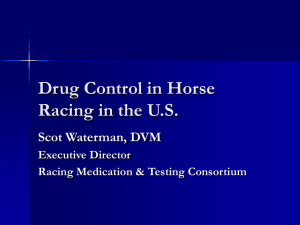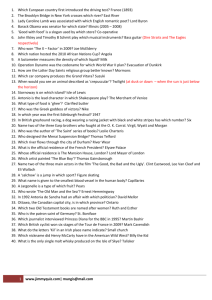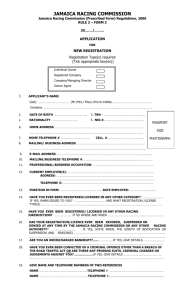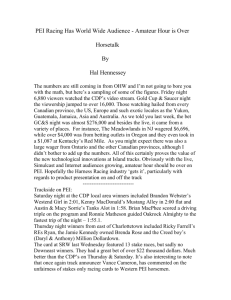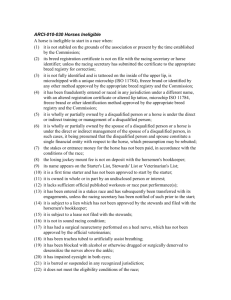RMTC Board Approves Plans for Threshold BloodHorse, KY
advertisement
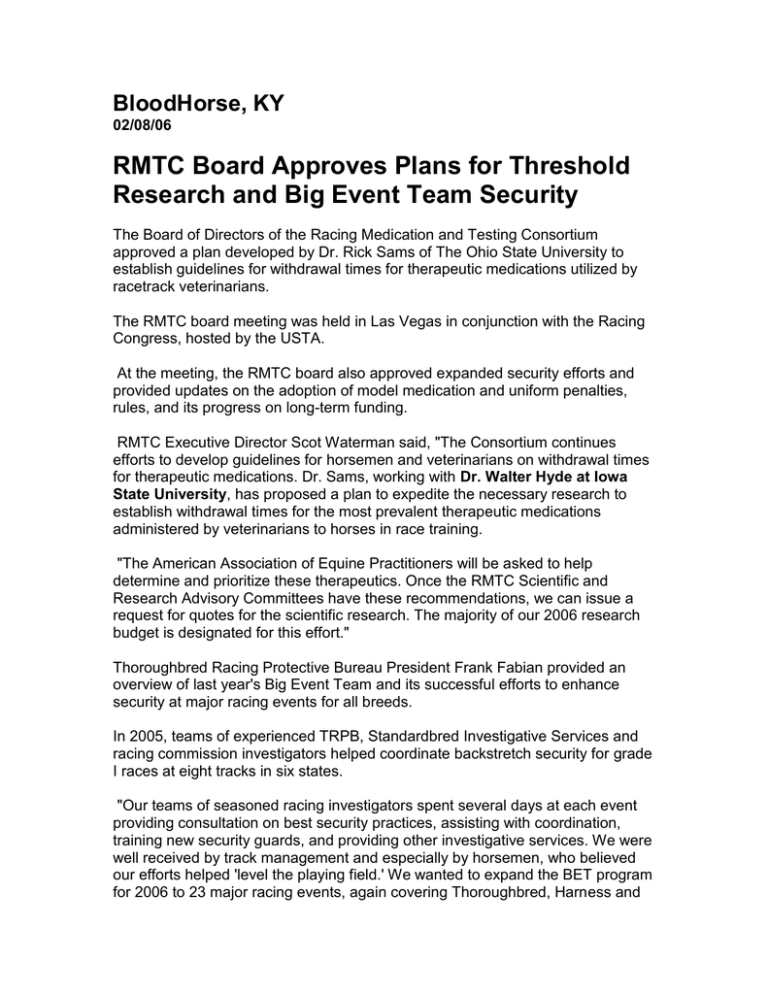
BloodHorse, KY 02/08/06 RMTC Board Approves Plans for Threshold Research and Big Event Team Security The Board of Directors of the Racing Medication and Testing Consortium approved a plan developed by Dr. Rick Sams of The Ohio State University to establish guidelines for withdrawal times for therapeutic medications utilized by racetrack veterinarians. The RMTC board meeting was held in Las Vegas in conjunction with the Racing Congress, hosted by the USTA. At the meeting, the RMTC board also approved expanded security efforts and provided updates on the adoption of model medication and uniform penalties, rules, and its progress on long-term funding. RMTC Executive Director Scot Waterman said, "The Consortium continues efforts to develop guidelines for horsemen and veterinarians on withdrawal times for therapeutic medications. Dr. Sams, working with Dr. Walter Hyde at Iowa State University, has proposed a plan to expedite the necessary research to establish withdrawal times for the most prevalent therapeutic medications administered by veterinarians to horses in race training. "The American Association of Equine Practitioners will be asked to help determine and prioritize these therapeutics. Once the RMTC Scientific and Research Advisory Committees have these recommendations, we can issue a request for quotes for the scientific research. The majority of our 2006 research budget is designated for this effort." Thoroughbred Racing Protective Bureau President Frank Fabian provided an overview of last year's Big Event Team and its successful efforts to enhance security at major racing events for all breeds. In 2005, teams of experienced TRPB, Standardbred Investigative Services and racing commission investigators helped coordinate backstretch security for grade I races at eight tracks in six states. "Our teams of seasoned racing investigators spent several days at each event providing consultation on best security practices, assisting with coordination, training new security guards, and providing other investigative services. We were well received by track management and especially by horsemen, who believed our efforts helped 'level the playing field.' We wanted to expand the BET program for 2006 to 23 major racing events, again covering Thoroughbred, Harness and American Quarter Horse racing." Dr. Waterman also reported that with the addition of Minnesota and the introduction of regulatory legislation in Indiana, 30 pari-mutuel horse racing states have adopted or are in the process of adopting the RMTC Model Medication Policy. In addition, the RMTC's recommended guidelines for penalties (suspensions and fines) were approved by the RCI and NAPRA boards in December and are already in the adoption process in California and Kentucky. He also reported on currently funded research projects on developing confirmation tests for the blood-doping agent erythropoietin or EPO and cone snail venom; threshold levels and withdrawal times for procaine penicillin and clenbuterol; and a method to differentiate morphine from environmental contaminants. The RMTC recently conducted a Proteomics Workshop, where 35 racing chemists from 16 states and five countries worked on protocols for finding protein-based drugs such as EPO and venoms in a working laboratory setting. The RMTC meeting began with discussion and final approval of the campaign for long-term funding for the RMTC. From 2003 through 2005, RMTC was funded by $2.7 million in contributions from member organizations. Beginning in 2006, RMTC will be securing commitments from racetracks and state horsemen's groups of all racing breeds to provide funding based on a formula determined by number of starts and average daily purse. The funding program is being phased-in over four years, with RMTC seeking 25% of the fees due from racetracks and horsemen in 2006. Using that formula, the RMTC would receive $198,414 from racetracks and $1,131,107 from horsemen in 2006. This amounts to about $12.50 per race in contributions from both horsemen and track owners. Presentations about this funding proposal have been made to the National HBPA, AQHA, USTA, TRA and HTA over the past 12 months. The Thoroughbred Horsemen's Association was the first to commit for 2006 with a maximum of $250,000 from THA affiliate organizations in New York, New Jersey, Pennsylvania, Maryland and Illinois. Previously, Oak Tree Racing Association and the Florida HBPA had contributed on a per-start or per-race basis.

